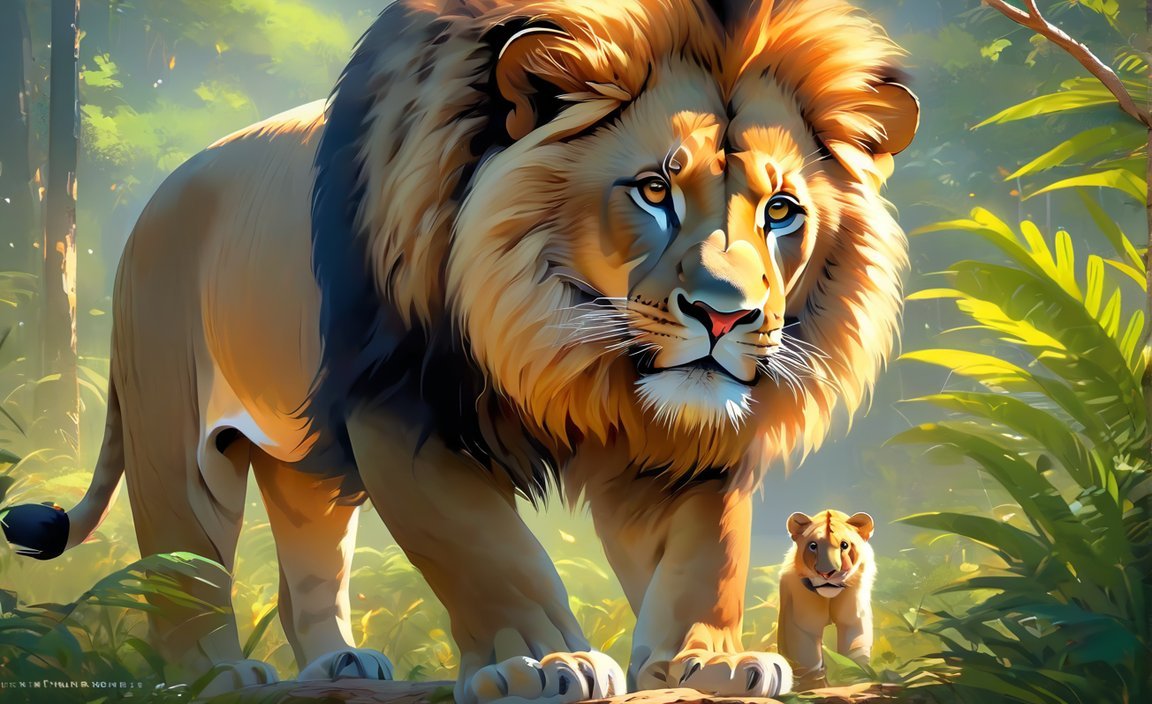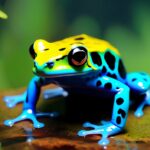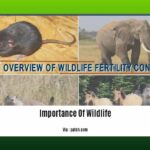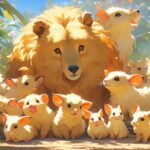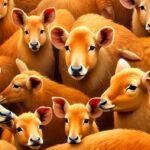Discover Fascinating Facts: 10 Insights into Wild Animals. Delve into the captivating world of wild animals as we uncover 10 incredible facts that will leave you in awe. From the astonishing adaptations of predators to the remarkable behaviors of elusive species, these insights will provide a deeper understanding and appreciation for the diverse wildlife that inhabit our planet. Join us on this journey as we unravel the secrets of the animal kingdom and unveil the wonders that lie within.
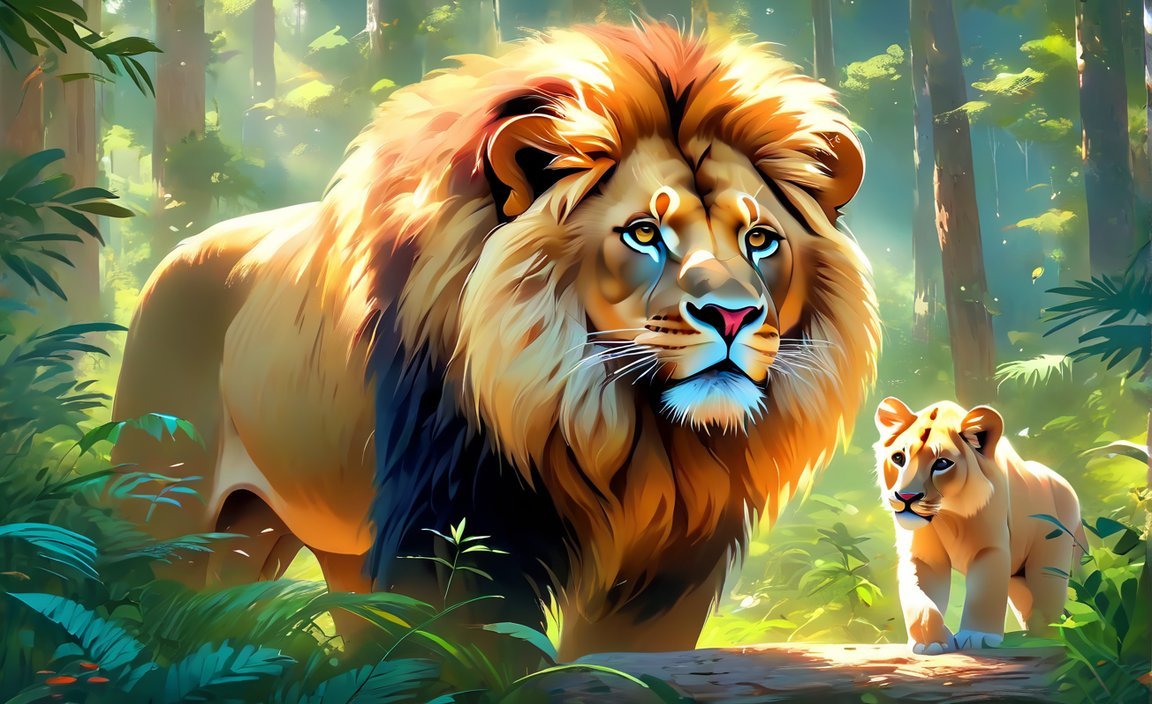
Key Takeaways:
- Wild dolphins are capable of giving each other names.
- Some frogs have adapted to live in elephant poop.
- Roosters can make themselves deaf if they don’t tip their heads back while crowing.
- Giraffes have blue tongues, unlike most mammals with red tongues.
- Crocodiles are prehistoric creatures that have been around since the time of the dinosaurs.
- Only 1% of all species of wild animals that have ever existed still live on Earth.
- Koalas and Australian wombats are unique marsupials found only in Australia.
- Wombats have the ability to produce cube-shaped poop.
- Elephant calves can stand within just 20 minutes of birth.
- Dugongs, also known as sea cows, were believed to be the inspiration behind mermaids and sirens.
10 Facts About Wild Animals
Wild animals never cease to amaze us with their incredible abilities, unique traits, and fascinating behavior. In this article, we will delve into the diverse and captivating world of wild animals and uncover 10 intriguing facts that will leave you in awe.
1. Wild Dolphins: Communicating Through Names
Did you know that wild dolphins have the ability to give each other names? Yes, you read that right! Through a complex system of clicks, whistles, and body language, dolphins communicate with one another using distinct vocalizations that can be considered their very own names[^1^]. Just like in our human society, these marine mammals have their own way of addressing and recognizing each other.
2. Frogs and Elephant Poop: Unusual Neighbors
Nature has countless surprises to offer, and the connection between some frogs and elephant poop is one of them. Certain species of frogs have adapted to make their homes inside elephant dung[^1^]. It may sound less than appealing to us, but for these amphibians, it provides protection from predators and a moist environment to thrive in. A unique living arrangement indeed!
3. Deafening Roosters: A Crowing Quirk
Roosters are well known for their loud and distinctive crowing, but did you know that they can make themselves deaf? It turns out that if roosters don’t tip their heads back while they crow, the sound vibrations can actually damage their ears[^1^]. So, the next time you hear a rooster belting out its morning song, remember how important it is for them to tilt their heads back for their own hearing well-being.
4. Giraffes: The Blue-Tongued Beauties
While most mammals have red tongues, giraffes sport a rather unique and unexpected feature – their tongues are blue! Yes, you read that right, the tongues of these magnificent creatures have a distinctive blue-purple hue[^2^]. Scientists believe this adaptation may serve as a natural sunscreen for their tongues while they browse for food in the scorching African sun. Talk about a stylish way to protect yourself from harmful UV rays!
5. Prehistoric Crocodiles: Living Fossils
Crocodiles have truly stood the test of time. These astonishing reptiles have existed since the time of the dinosaurs, making them true living fossils[^2^]. The crocodile lineage can be traced back over 200 million years, showcasing their incredible resilience and adaptation to various environments. Next time you spot a crocodile, remember that you are in the presence of a prehistoric creature!
6. The Extinction Crisis: A Solemn Reality
Mother Earth is home to millions of species, each with its own beauty and purpose. However, it’s disheartening to know that currently, only 1% of all species of wild animals that ever existed still inhabit our planet[^2^]. Human activities, habitat destruction, and climate change pose serious threats to biodiversity. Let’s remember that we hold the responsibility to protect and preserve the diversity of life on Earth.
7. Australian Wombats and Koalas: Unique Cousins
Australia is renowned for its remarkable wildlife, and its marsupials hold a special place in our hearts. Two unique and adorable marsupials found exclusively in Australia are the koala and the wombat[^2^]. These distant cousins share a common ancestry and possess distinct adaptations for their specialized lifestyles. Studying their unique characteristics can provide valuable insights into the wonders of evolution.
8. Wombats and Cube-Shaped Poop: A Puzzling Enigma
When it comes to intriguing bathroom habits, wombats take the crown. These furry creatures have the remarkable ability to produce Cube-shaped poop[^2^]. Unlike most mammals, whose excrement takes on more cylindrical forms, wombats’ digestive system allows them to create these neat cube-shaped droppings. This adaptation helps prevent the poop from rolling away, marking their territories more effectively. Nature truly has a way of surprising us!
9. Elephants: Quick Learners from Birth
Elephants are known for their intelligence and remarkable social structures, but did you know that elephant calves can stand within just 20 minutes of being born? This astonishing ability demonstrates how quickly these gentle giants adapt to their surroundings and navigate their way through life[^2^]. From the moment of birth, elephant calves are ready to embark on their incredible journey within the herd.
10. Dugongs: Mermaids of the Sea
Beautiful and mystical, dugongs, also known as sea cows, have inspired tales of mermaids and sirens throughout history[^2^]. With their serene presence and graceful movements, these marine mammals have captivated the human imagination. Next time you catch a glimpse of a dugong, take a moment to appreciate the enchanting connection between these gentle giants and the legends of the sea.
These ten facts about wild animals showcase just a glimpse of the incredible diversity and remarkable traits found in the animal kingdom. From astonishing adaptations to ancient lineages, there is always more to discover and appreciate about the fascinating creatures that share our planet.
Sources:
[^1^]: Bored Teachers. 100 Fascinating Animal Facts to Wow Your Students, Bored Teachers.
[^2^]: 100-Facts. 50 Interesting Facts about Wild Animals, 100-Facts.
Check out these 10 mind-blowing facts about the marine environment! Dive into the wonders of our oceans by clicking here.
Discover the incredible world of ocean creatures with these fascinating 10 facts. Explore the depths of the sea and learn more by clicking here.
Explore the hidden secrets of plant and animal cells with these 10 astonishing facts. Uncover the mysteries of life by clicking here.
Delve into the captivating realm of sea life and uncover 10 astonishing facts. Immerse yourself in the wonders of the ocean by clicking here.
3. Many Wild Animals: Guardians of Ecosystems
Did you know that many wild animals play crucial roles in their ecosystems, such as pollination, seed dispersal, and maintaining predator-prey dynamics? These incredible creatures contribute significantly to the health and balance of their habitats, ensuring the survival of various plant species and fostering biodiversity. Let’s dive deeper into the fascinating insights about these ecosystem guardians.
The Ripple Effect of Animal Actions
Wild animals are like the gears of an intricately designed machine, each turning to keep the ecosystem running smoothly. From the tiniest insects to the mighty predators, their actions create a ripple effect that shapes the entire environment.
Pollination: The Sweet Symphony of Life
Pollination is an essential process in the reproduction cycle of flowering plants. While bees often take center stage in this performance, various animals, including birds, bats, butterflies, and even some mammals, play key roles as well. As they go about their daily foraging, these creatures inadvertently transfer pollen from one flower to another, enabling the fertilization that results in the formation of seeds and fruits. Without pollinators, many plant species would struggle to reproduce, leading to a devastating impact on both the ecosystem and human food sources.
Seed Dispersal: Nature’s Scatterers
As wild animals consume fruits, they unintentionally become carriers of life. Seed dispersal occurs when animals consume fruits and then deposit the seeds in different locations through their excrement or by dropping them unintentionally during their travels. This dispersal process helps plants colonize new areas, ensuring their survival and contributing to the overall biodiversity of the ecosystem. From birds that regurgitate seeds after feasting on fruits to mammals that carry seeds in their fur, wild animals play a crucial role in the continuous cycle of plant regeneration.
Predator-Prey Dynamics: Nature’s Balancing Act
Beyond the seemingly fierce interactions between predators and prey, there lies a delicate balance that shapes the dynamics of an ecosystem. Predators help control the population of herbivorous animals, preventing excessive grazing that could harm plant species. This regulation sustains the integrity of the ecosystem and ensures resources are available for all. At the same time, prey animals develop ingenious ways to evade their hunters, leading to the evolution of various adaptations that enrich the fascinating tapestry of wildlife diversity.
Key Takeaways:
- Pollination is a vital process facilitated by a diverse range of animals, including bees, birds, bats, butterflies, and mammals. It ensures the reproduction of flowering plants and the availability of food sources.
- Seed dispersal occurs when animals consume fruits and transport the seeds to different locations through their excrement or unintentional drop-offs. This process facilitates plant colonization and contributes to overall biodiversity.
- Predator-prey dynamics maintain the delicate balance of an ecosystem. Predators help control herbivore populations, while prey animals develop unique adaptations to survive, enriching the diversity of wildlife.
Sources:
– Royal Society Publishing
– Nature
4. Wild animals face numerous threats from human activities, including habitat destruction, poaching, pollution, and climate change.
As we delve into the world of wild animals, it becomes increasingly apparent that they face a multitude of challenges brought upon by human activities. These magnificent creatures are confronted with habitat destruction, poaching, pollution, and the daunting effects of climate change. In this article, we will explore these threats and shed light on the urgent need for conservation efforts to protect our diverse wildlife.
Habitat Destruction: A Devastating Consequence
One of the most pressing issues faced by wild animals is habitat destruction. Approximately 15 billion trees are cut down each year, resulting in the loss of critical ecosystems (National Geographic Society Newsroom). From forests to coral reefs, these habitats are vanishing at an alarming rate, depriving wildlife of their homes and vital resources (BBC).
Poaching: Pushing Species to the Brink
The illegal and widespread practice of poaching poses a severe threat to numerous species worldwide. Unscrupulous individuals hunt animals for their ivory, horns, or skins, driving some species dangerously close to extinction (National Geographic). The cruel and unsustainable trade in wildlife products must be addressed to safeguard the future of these vulnerable animals.
Pollution: A Silent Killer
Pollution, whether from industrial waste, agricultural run-off, or plastic in our oceans, poses a significant danger to wildlife. It contaminates their habitats, water sources, and food supplies, affecting their health and reproductive capabilities. From birds getting entangled in plastic debris to marine life ingesting microplastics, the impacts of pollution on wild animals are far-reaching.
Climate Change: Unseen Consequences
The effects of climate change are exacerbating the challenges faced by wild animals. Rising temperatures, altered rainfall patterns, and extreme weather events are pushing many species to their limits, disrupting their natural behavior and survival strategies (Nature). From polar bears losing their sea ice habitats to coral reefs succumbing to bleaching events, the impacts of climate change on wildlife are undeniable.
Key Takeaways:
- Habitat destruction leads to the loss of critical ecosystems and resources for wild animals.
- The illegal practice of poaching threatens the survival of numerous species.
- Pollution contaminates habitats and affects the health and reproduction of wildlife.
- Climate change disrupts natural behavior and diminishes the resilience of wild animals.
Sources:
– National Geographic Society Newsroom
– BBC
5. Conservation efforts and protected areas are essential for safeguarding wild animal populations and their habitats.
Protecting Habitats: The Impact of Deforestation
Conservation efforts to combat deforestation are crucial for the preservation of wild animal populations and their habitats. Deforestation leads to the fragmentation and destruction of once-connected forests, resulting in shrinking habitats for various animal species. Protecting and restoring forests, as well as creating wildlife bridges to connect fragmented habitats, are effective measures in this fight against deforestation and the preservation of habitats for wild animals (Animal Charity Evaluators).
Source: Animal Charity Evaluators
The Practice of Wildlife Conservation
Wildlife conservation involves the preservation and protection of plant and animal species, including their habitats. It aims to ensure the long-term survival of these species and educate people about sustainable coexistence with other living beings. As part of the world’s ecosystems, wildlife provides balance and stability to nature’s processes, making conservation efforts vital (National Geographic Society).
Source: National Geographic Society
The Importance of Wildlife Conservation
Food and Nutritional Security
Wildlife conservation plays a crucial role in providing food and nutritional security, especially for rural communities. Many of these communities heavily depend on wildlife for food and income. In certain tropical and subtropical regions, wild meat contributes to more than 50% of the protein intake. Encouraging sustainable levels of hunting and fishing and reducing unsustainable wildlife consumption in urban areas are necessary steps to ensure food security (Food and Agriculture Organization).
Source: Food and Agriculture Organization
Protection of Ecosystems and Biodiversity
Wildlife conservation is essential for protecting ecosystems and maintaining biodiversity. Wildlife species contribute to the delivery of various ecosystem services that are vital for forests, food production, and agriculture. Conserving and sustainably using biodiversity is crucial for achieving zero hunger and reducing poverty, as emphasized by the Food and Agriculture Organization (Food and Agriculture Organization).
Source: Food and Agriculture Organization
The Role of Protected Areas
Protected areas play a crucial role in wildlife conservation as they provide suitable habitats for various species and contribute to the preservation of biodiversity. However, the effectiveness of protected areas depends on their size, connectivity, funding, and management. Establishing large, connected, well-funded, and well-managed protected areas is essential for effective conservation efforts (Nature).
Source: Nature
Key Takeaways:
- Conservation efforts are vital for safeguarding wild animal populations and their habitats.
- Combating deforestation and preserving forests are crucial in protecting the habitats of various animal species.
- Wildlife conservation ensures food and nutritional security for rural communities.
- The protection of ecosystems and biodiversity relies on wildlife conservation.
- Well-managed and funded protected areas are essential for effective wildlife conservation.
Sources:
– Animal Charity Evaluators
– National Geographic Society
– Food and Agriculture Organization
– Nature
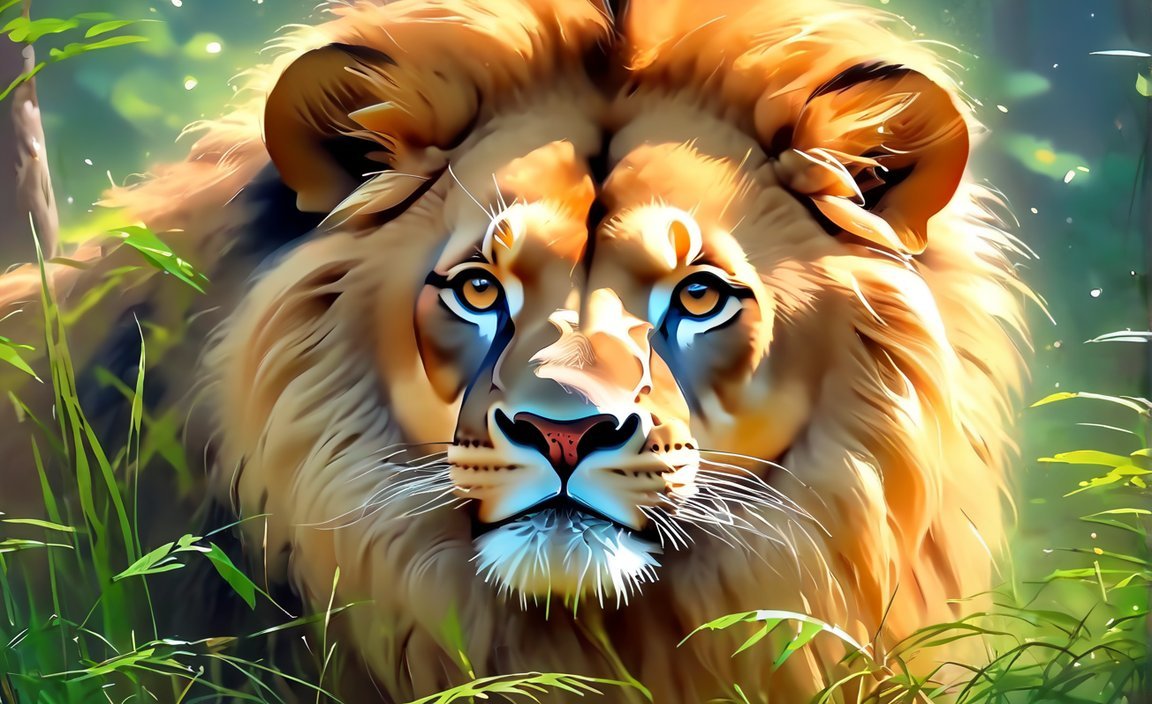
FAQ
Q1: Why is wildlife conservation important?
A1: Wildlife conservation is important because it helps protect and preserve plant and animal species, as well as their natural habitats. It plays a crucial role in maintaining the balance and stability of nature’s processes, ensuring the survival of various species, and safeguarding ecosystems and biodiversity.
Q2: How does deforestation impact wildlife conservation?
A2: Deforestation has a significant impact on wildlife conservation as it leads to the destruction and fragmentation of forests, resulting in shrinking habitats for wild animals. Protecting habitats from deforestation is crucial for preserving the biodiversity and overall well-being of various species.
Q3: What role do protected areas play in wildlife conservation?
A3: Protected areas are essential for wildlife conservation as they provide suitable habitats for various species and contribute to the preservation of biodiversity. These areas serve as safe havens for wildlife and play a crucial role in ensuring their long-term survival.
Q4: How does wildlife conservation contribute to food security?
A4: Wildlife conservation plays a crucial role in providing food and nutritional security, especially in rural communities. Many of these communities heavily depend on wildlife for food and income, and sustainable hunting and fishing practices are encouraged to ensure the availability of protein sources.
Q5: What are some examples of ecosystem services provided by wildlife?
A5: Wildlife species contribute to the delivery of various ecosystem services, such as pollination, seed dispersal, nutrient cycling, and controlling climate change mitigation. They play a vital role in maintaining the health and productivity of forests, food production systems, and agriculture.
- China II Review: Delicious Food & Speedy Service - April 17, 2025
- Understand Virginia’s Flag: History & Debate - April 17, 2025
- Explore Long Island’s Map: Unique Regions & Insights - April 17, 2025
